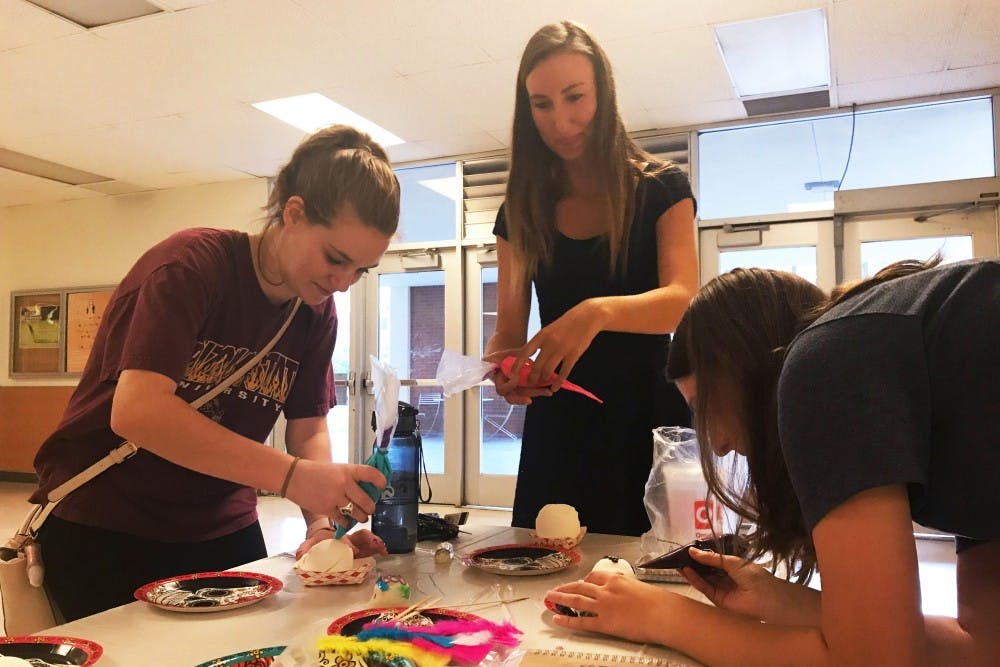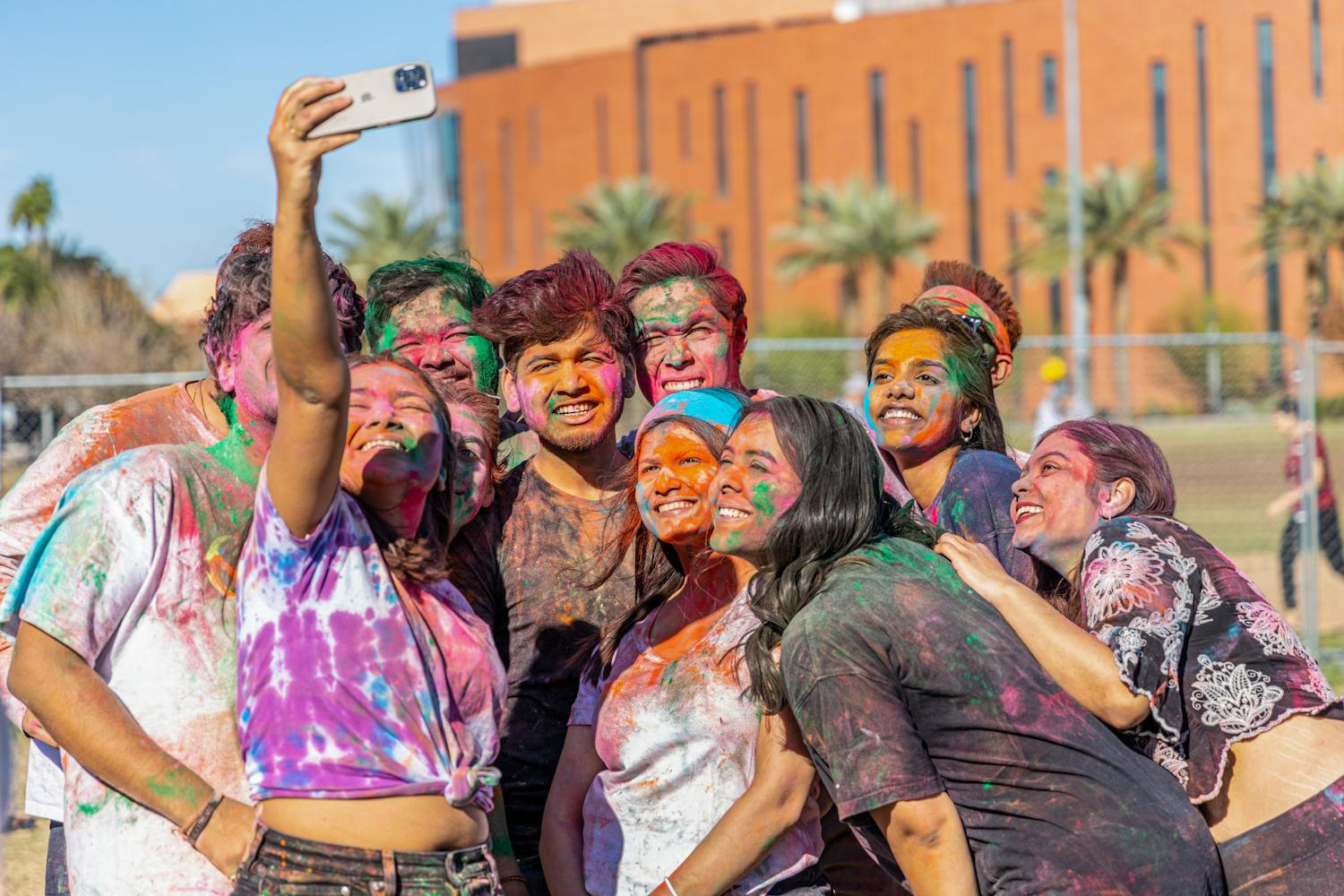Students gathered in the lobby of the G. Homer Durham Language and Literature building to learn about the festival of El Día de los Muertos while decorating sugar skulls and adding to an altar.
Students interested in learning about the culture surrounding El Día de los Muertos, or the Day of the Dead, were given the opportunity to attend a lecture on the subject and participate in several seasonal activities on Monday evening.
The School of International Letters and Cultures teamed up with the University club Organizacion de la Lengua Espanola to turn the lobby of the G. Homer Durham Language and Literature building into a temporary shrine where students were able to add pictures to an altar dedicated to deceased people that they loved or admired.
Jesus Rosales, the faculty head of Spanish and Portuguese at ASU, spoke about the significance of the Day of the Dead at the event. Rosales said the idea is to never forget a person once they are gone.
“It is a celebration not of people dying, but actually remembering them when they were alive,” Rosales said.
Rosales said that the altars are typically adorned with favorite foods, sentimental items such as jewelry or glasses and water to quench the thirst of the deceased. The altars also include flowers, incense and candles that are believed to guide the spirit to the altar and clean the area for them.
“I would get something like my mother’s earrings alongside it, and my father used to like to wear shirts with cufflinks, so I would get his special cufflinks,” Rosales said, “Something like that to commemorate the people that you loved a lot.”
Angelica Amezcua, a doctoral student in Spanish linguistics, said there is no right or wrong length of time to leave an altar in place, depending on where the altar is and if the space is needed.
She also said some altars are left for a couple of days, and some are left up all year long.
“I think it brings a lot of understanding, that it is something so natural but we are so afraid of it,” Amezcua said, “It’s ways to understand that this is our path and we are breaking away from fear.”
Shelly Smith, a junior in linguistics, said the festival is more important to her this year than it has been in years past because she lost her father in January.
“I’m having a hard time with it, so to celebrate life is amazing,” Smith said.
An article from Smithsonian Insiders said the temporary altars, or ofrenda, are the most recognized symbol of the Day of the Dead as they are “a way for families to honor their loved ones and provide them what they need on their journey” in the afterlife.
Students who participated were asked to bring items to decorate the altar with, including a picture of the person they were honoring as well as flowers and candies.
Smith said it is important for the University to hold events like this because of the diverse culture of the students.
“So many people come from so many different places all over the world,” Smith said. “It’s important that we all understand each other’s cultures, so that we can be more open-minded to each other.”
The altar will remain on display in the lobby of the Language and Literature building until Nov. 3.
Reach the reporter at jlneff1@asu.edu or follow @jennaleeneff on Twitter.
Like The State Press on Facebook and follow @statepress on Twitter.




